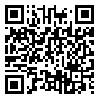BibTeX | RIS | EndNote | Medlars | ProCite | Reference Manager | RefWorks
Send citation to:
URL: http://ismj.bpums.ac.ir/article-1-799-en.html

 , Mohammad Arjomndzadegan2
, Mohammad Arjomndzadegan2 
 , Azam Ahmadi *3
, Azam Ahmadi *3 
 , Seyyed Hossein Hosseini1
, Seyyed Hossein Hosseini1 
 , Manijeh Kahbazi4
, Manijeh Kahbazi4 
 , Mojtaba Tousheh5
, Mojtaba Tousheh5 

2- Infectious Diseases Research center (IDRC) and Department of Microbiology and Immunology, School of medicine, Arak University of Medical Sciences, Arak, Iran
3- Department of molecular genetics, Tarbiat Modarres University, Tehran and Infectious Diseases Research center (IDRC), Arak University of Medical Sciences, Arak , Iran ,
4- Infectious Diseases Research center (IDRC), Department of Pediatric Infectious, Arak University of Medical Sciences, Arak, Iran
5- Department of Cellular and Molecular Biology, Faculty of Science, University of Isfahan
Background:during recent years, the incidence and spread of drug resistance in Mycobacterium tuberculosis, the bacterium causing tuberculosis, has set this disease in World Health Organizationpriorities alignment of diseases like AIDS and hepatitis. Study of close examination of resistant and susceptible clinical strains genotypes is necessary to overcome drug resistance. Among the numerous repair systems, only there are limited number of encoding genes of DNA repair enzymes in Mycobacterium tuberculosis. Commonly these genes have been conserved and any changes among them likely increasethe mutation occurance due to the impossibility of correctionof spontaneous mutations insensitive strains of this bacteria.mut genes encodeDNA repairable enzymes.This study investigated the mutations in these genes and the effect of these mutations on tuberculosis drug resistance.
Materials&Methods: In this study,of 29 available specimens,we were selected 8 susceptible strains and 21 resistantstrains andafter ordering appropriate primers and performing the proliferation reaction two types of amplicons produced which includingfragments of genes mut T2 and mut T4 and they were sent inorder to sequencing.
Results:The results of chain reactionprimer represents an appropriate choice of primerswhich were investigated. Sequencing results showed that overall 73% of resistant strains that had been selected for study of mutT4gene, have no mutations in codons 48of mutT4 gene, and 70% of resistant strains have no GGA >>> CGA mutation at codon 58 of mutT2 gene.
Conclusion: One of the strategies to overcome tuberculosis drug resistance is a close examination of genotypes of resistant and susceptible clinical strains. Results of this study was performedby examining changes in mut T2 and mut T4 gene sequence. The mutation in mut T2 always associated with mutation in mut T4, in this way, the first mutation may occurs in mut T4and after that, the second mutationmay occurs in mut T2. Importance of this is determined by study of encoded proteins by these two genes and position of mut t4thanmut T2 in the MUT HLS spatial structure of protein complex. Results of comparison of drug resistance and occurrence of mutations in hot-spots of mut T2 and mut T4 genes illustrated that these genes are conserved in resistant strains. However, there is no significant relation in susceptible strains.
Received: 2014/12/26 | Accepted: 2015/06/22 | Published: 2016/07/17
| Rights and Permissions | |
 |
This work is licensed under a Creative Commons Attribution-NonCommercial 4.0 International License. |




